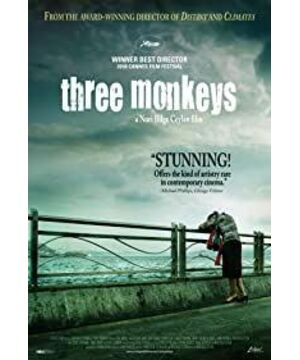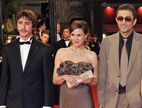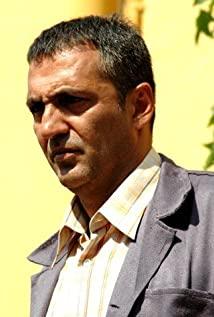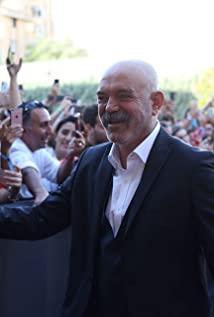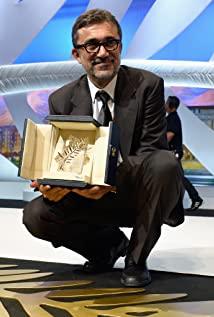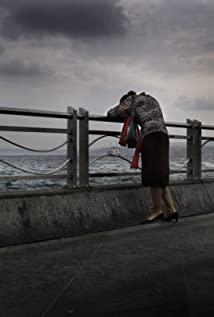In detail, the director has already made a very wonderful discussion on the topic of "Three Monkeys": "Today "Three Monkeys" is commonly used to describe someone who doesn't want to be involved in a situation, or someone willfully turning a blind eye to the immorality of an act in which they are involved. "(From "Filmmaker") can be described as a Chinese proverb, "It's nothing to do with yourself, but to hang up high." In fact, the so-called moral metaphor , The film has already given an explanation at the beginning. An oncoming car, facing the stranger who had been knocked to the ground by Servet, "opened one eye and closed another" quietly passed by.
However, when this kind of "turning a blind eye" happened to me, the tragedy of the film occurred. Servet used a sum of money to buy his driver Eyüp to carry the scapegoat for himself; Eyüp also used a sum of money to buy the teahouse buddy Bayram to carry the scapegoat for his son. In this sense, they are all cowardly and face I chose to escape when I was shutting myself down. Vertically, all the characters in the film are avoiding (lying), as if nothing happened. At the same time, the closed structure of the whole film is also revealed, with heavy rains and heavy rains, which puts the tiny characters in the vast natural environment. The rumble of thunder is in opposition to the roar of the train. One is a natural phenomenon and the other is a reality. The huge noises of the two are powerless to the protagonist of the film. Father, wife, and son all walked through the deafening tunnel. It is worth mentioning that "Three Monkeys" is not only unique in the choice of camera position, long lens, and focal length, but also excels in the use of active sound effects. In addition to the above-mentioned thunder, the roar of trains, and the natural wind played a finishing touch in the whole film. With the floating curtains and the amplified natural wind, the fate of the characters is as fragile as quicksand.
Obviously, the tone of the whole film is basically weak to almost collapsed. In this regard, the "sleeping shots" that lasted for more than 1 minute and the depth shots that followed the film were fully revealed. There are not too many fierce conflicts (the only conflict is Eyüp’s "going to bed" with his wife Hacer); there are no scenes of bayonet violence (the murder of the official Servet by his son Ismail is completely omitted); there are no sensational scenes of tears (Eyüp is avoiding The wife's silent tears when she committed suicide), "Three Monkeys" very restrained control the emotions of the characters and the mood of the audience. As a result, the fixed-camera long lens that appears as if the third person's posture bears this collapse. For example: the dialogue between mother and son. For the first time, the two ate together but one after another; the second time, the mother waited for her son to return late; the third time, the two watched TV programs together. The trivial and boring life strongly suppresses the emotions of the characters.
Although the title of "Three Monkeys" is an allegorical metaphor, the whole film is not reduced to dogmatic obscurity. At 39 minutes, the son Ismail's voyeuristic scene of the adultery of his mother Hacer and the official Servet. Here the director disregarded his son's subjective lens, and the audience could only see Ismail's eyeballs in the keyhole. Naturally, the "seeing" of "turning a blind eye" has become the dominant metaphorical theme of the entire film. Who is watching? What did they see? What are they deliberately avoiding to see? Oppositely speaking, we can analyze the role of "seeing" in the scheduling of the entire film from the two surreal scenes in the film that shuttle in reality. First, the son actually saw the dead brother (virtual focus to full focus); second, the father turned his back to the dead young son and did not look back (fixed camera position, fixed focus). Interestingly, after the father was released from prison, it was the father and son who went together to "see" (go to the grave) the dead young son. The group photo (father and two young sons) that did not appear until ten minutes before the end of the film was actually hung on the wall of the room as early as the beginning of the film.
When it comes to the density of props, in addition to the group photo on the wall of Eyüp's family, another oil painting on the wall is quite ironic. As mentioned above, the whole film has a weak, suffocating, and decadent texture, but on the walls of Cha Cha there are impressionist paintings similar to "Pissarro (the famous impressionist painter of Camille Pissarro, 1830-1903)" style. Natural, bright and colorful oil paintings, black and humorously play a little joke on the tragic fate of this family.
All kinds of "looks", "Three Monkeys" is a very enduring movie, its stylization, its restrained restraint, its narrative structure, a secular story perfectly reflects a certain aspect of the human soul ( "This is a specific story created specially to be able to show certain aspects of human soul." Ceylon).
Graphic version:
http://www.mtime.com/my/renzhi/blog/2744431/#Comment
View more about Three Monkeys reviews


